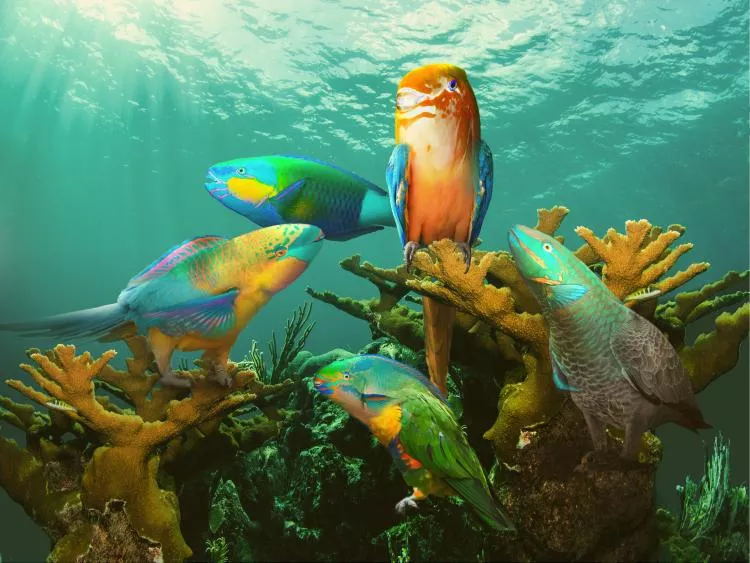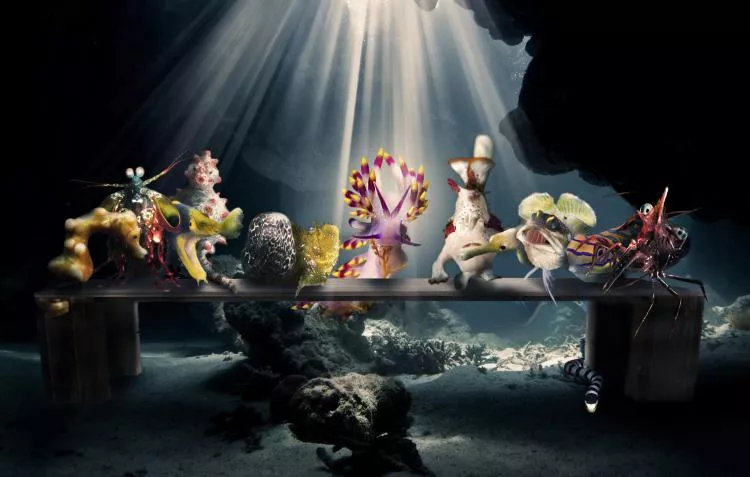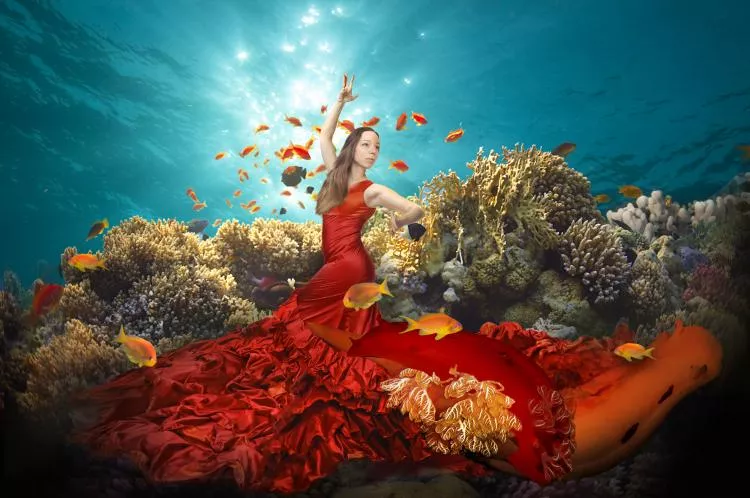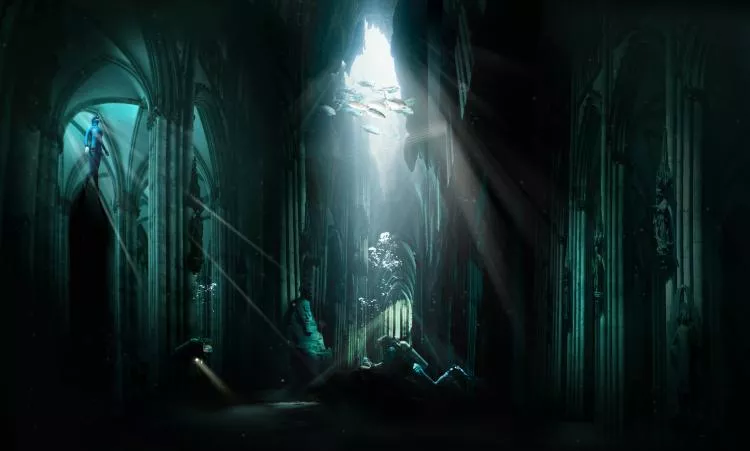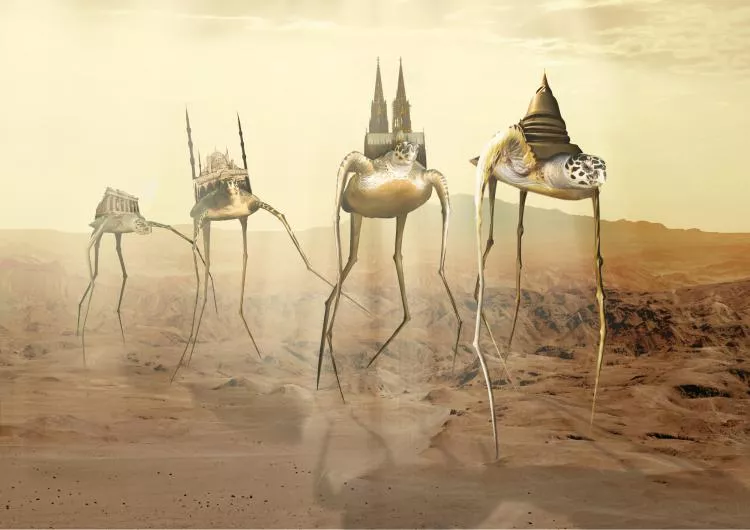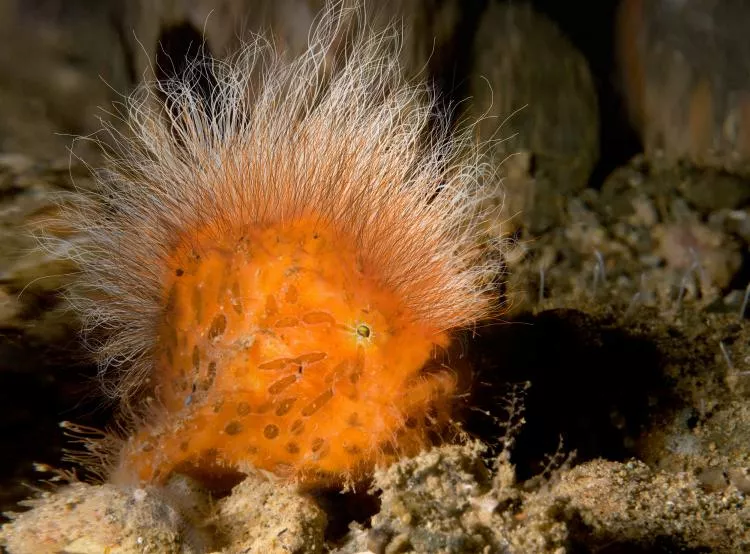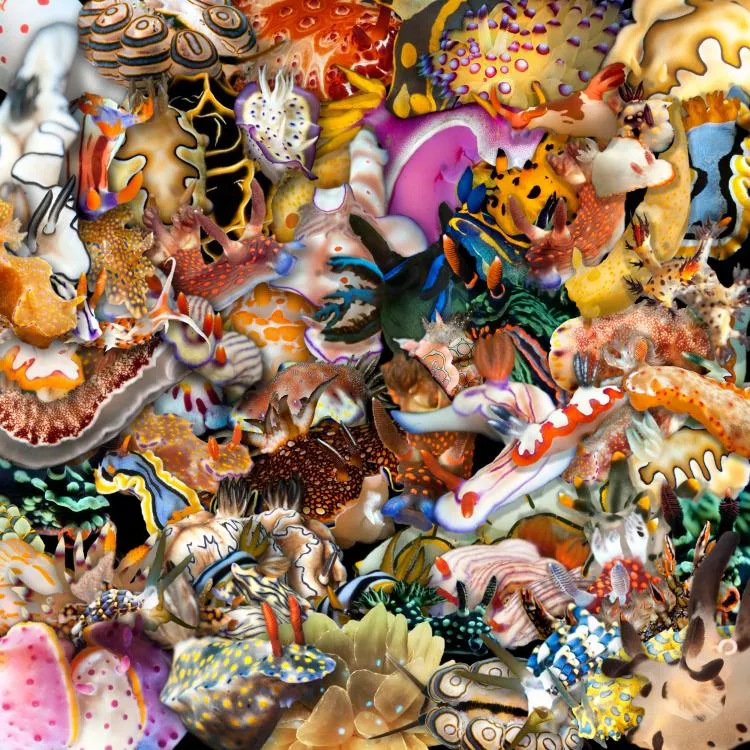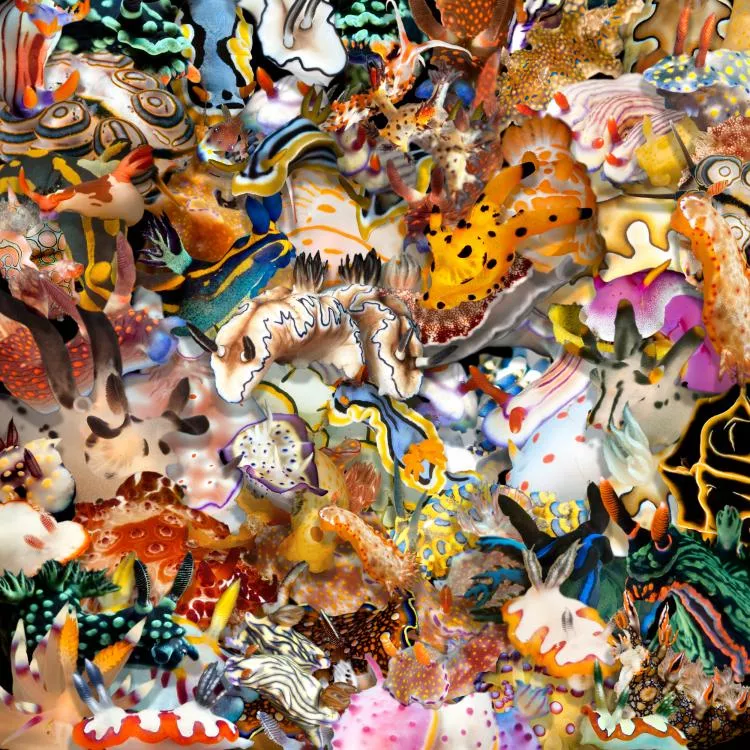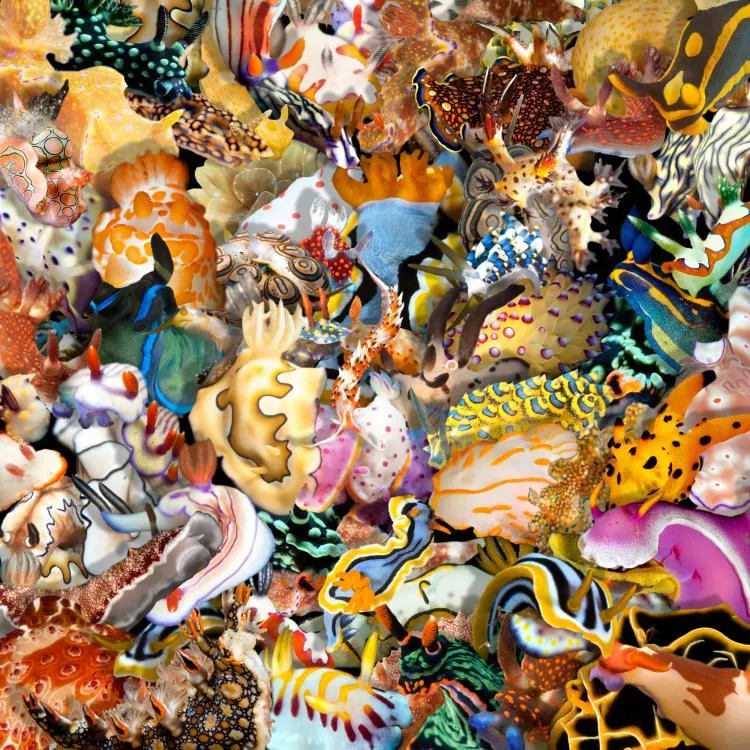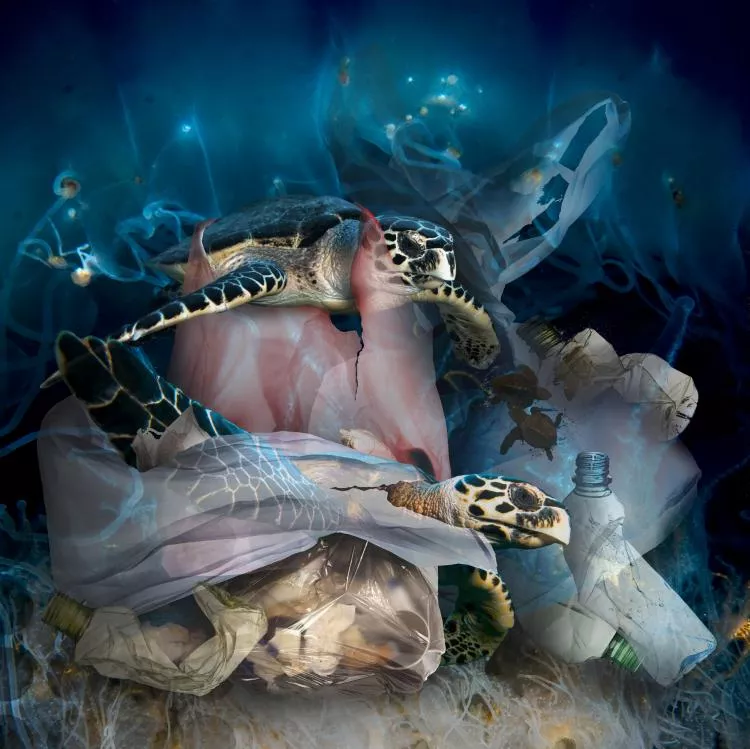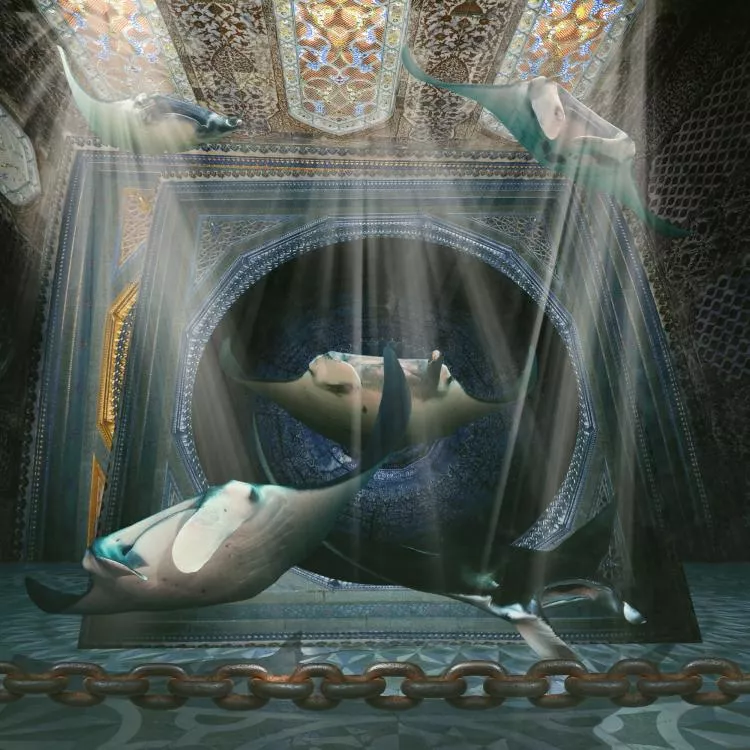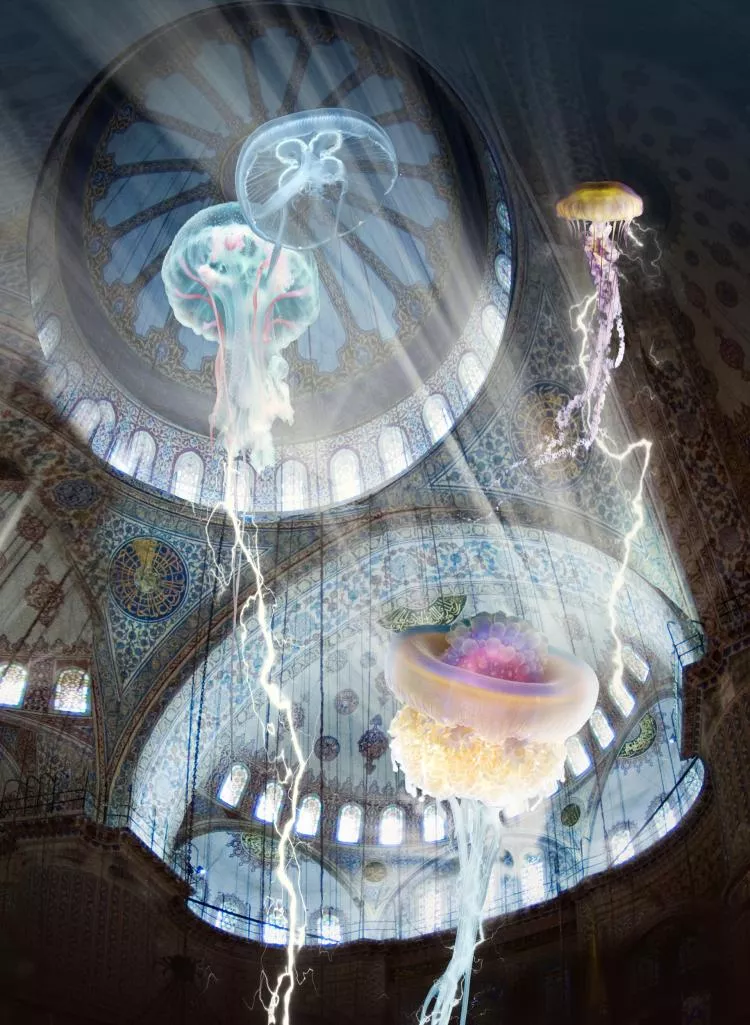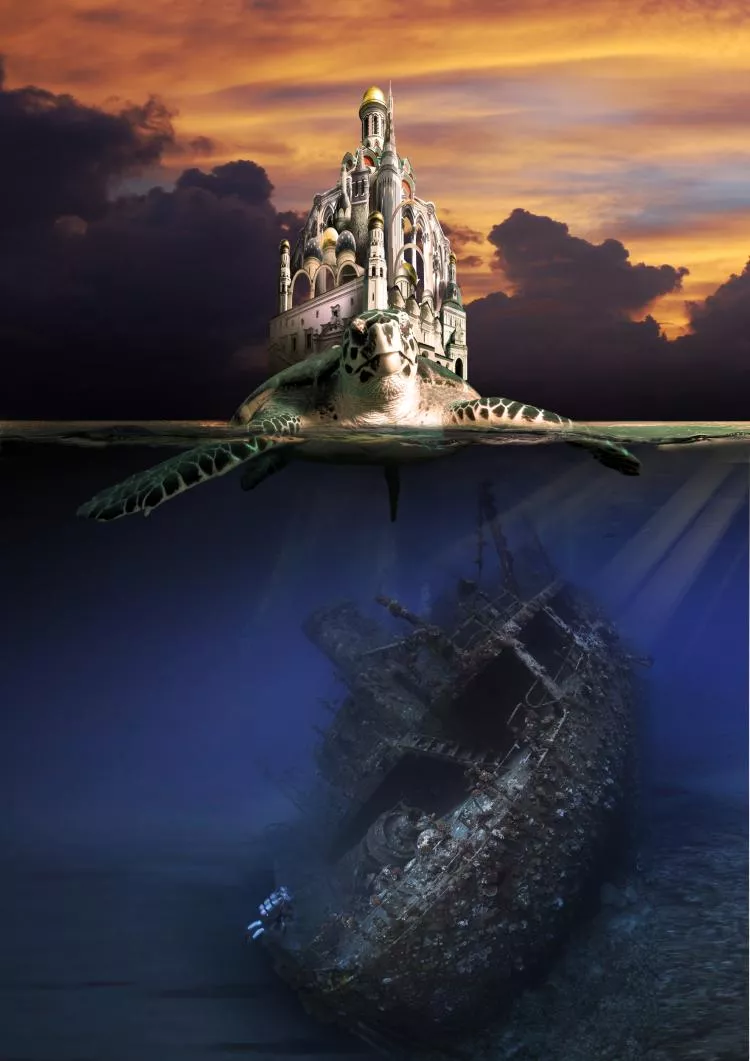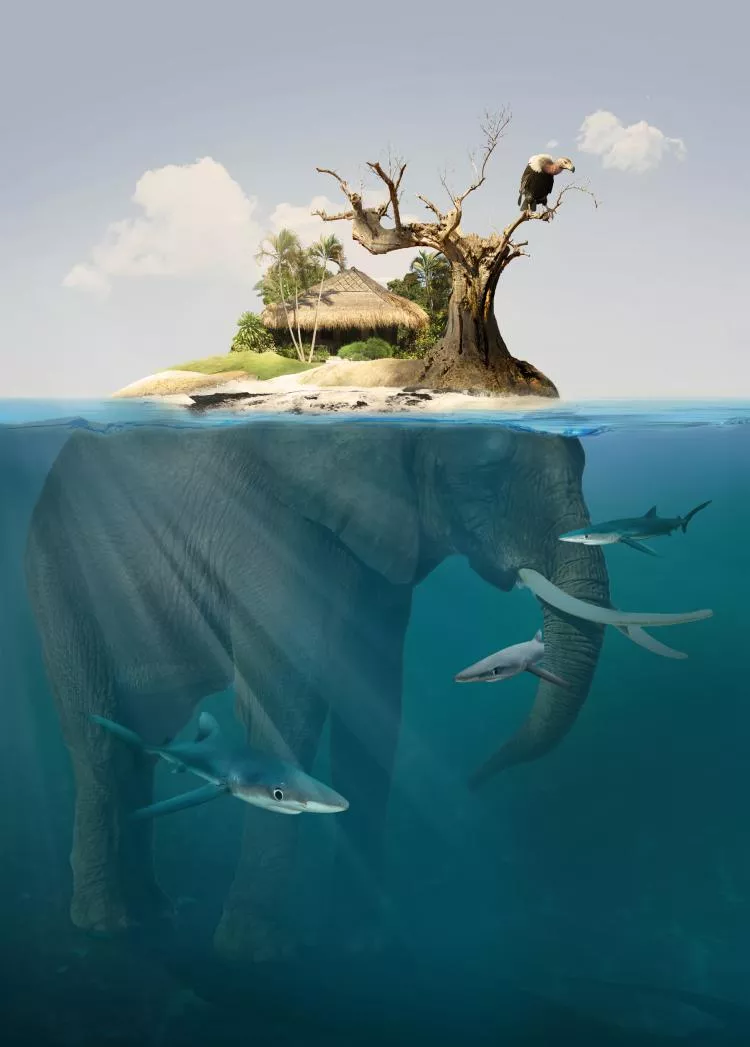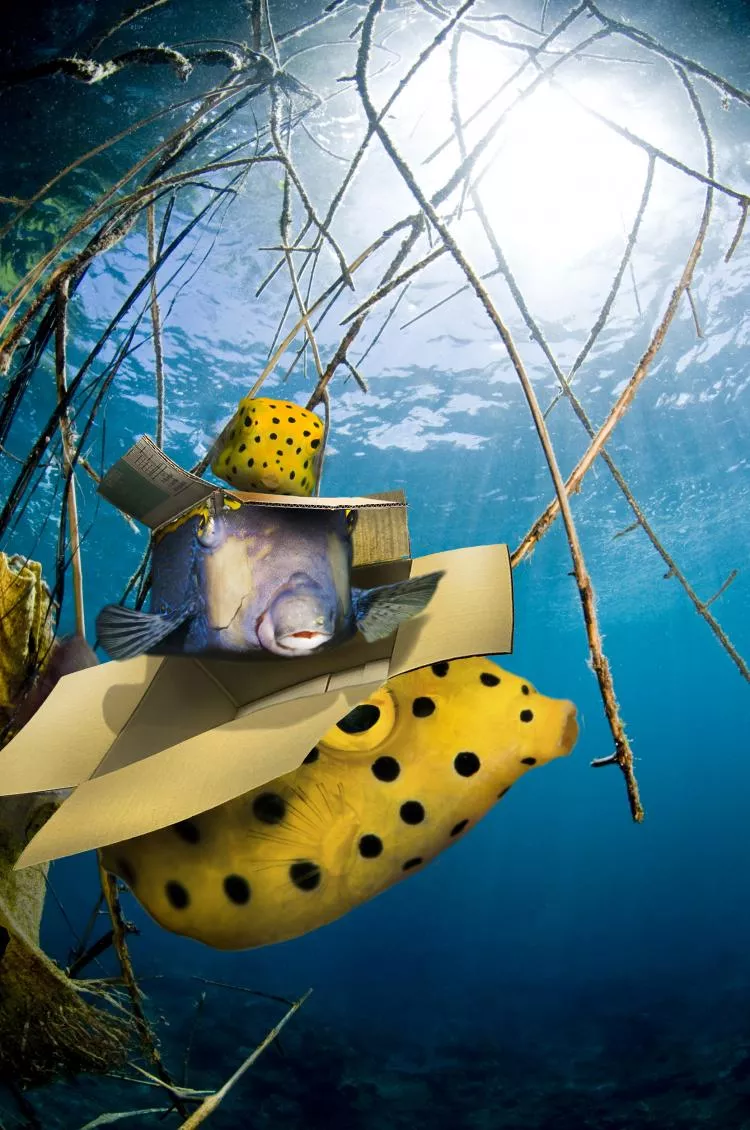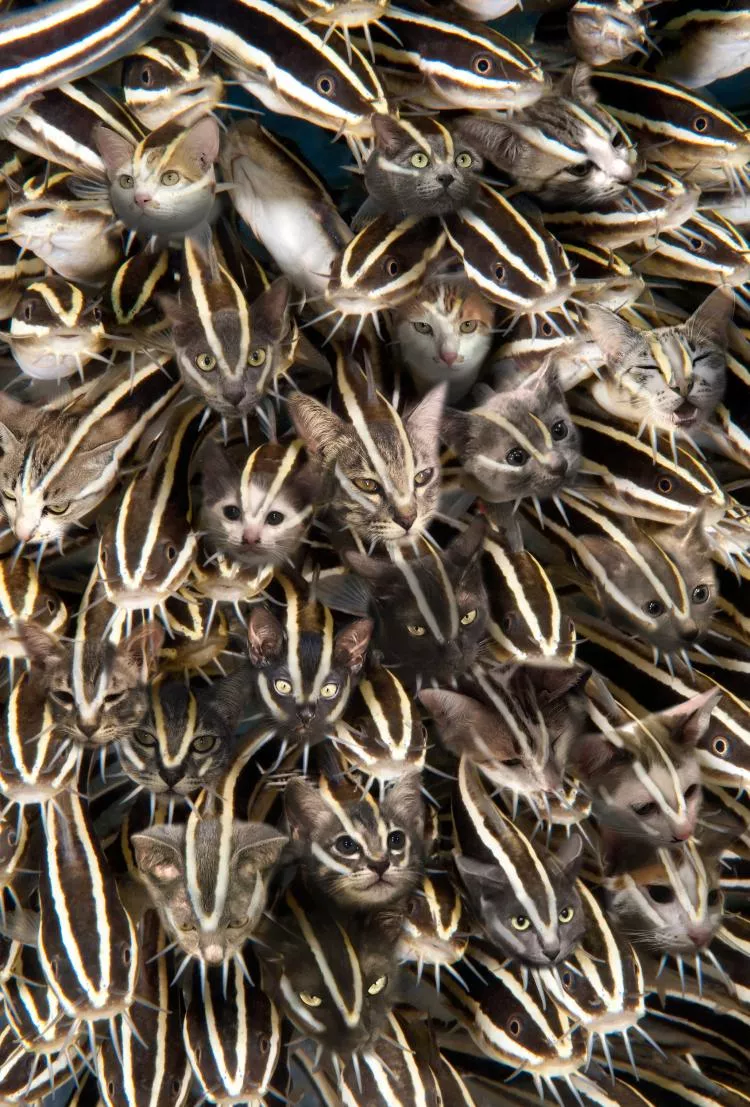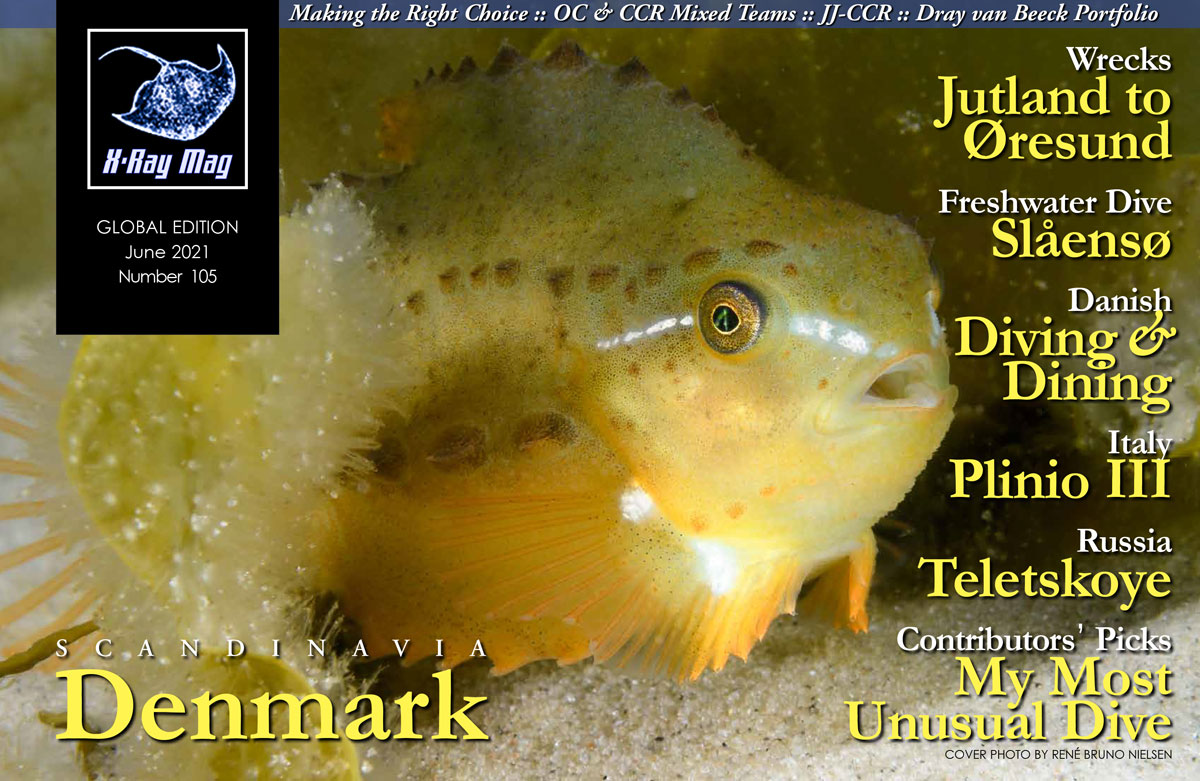In this issue, we celebrate Dutch digital artist and dive professional Dray van Beeck, who passed away suddenly on 19 April 2021. Together with his wife, Karin, he managed the Bali Diving Academy Pemuteran in Indonesia. A fine artist, avid diver and underwater photographer, Dray created surreal and fantastical scenes in digital artworks composed using his own underwater images. A few months ago, X-Ray Mag interviewed the artist and we share with you now the artist’s own words about his creative process and insights on digital art and the underwater realm he loved.
Contributed by
"I love making my art, and I love it when my artwork evokes a reaction in people. I am so happy I found a way to combine my two passions: diving and art."
— Dray van Beeck
X-RAY MAG: Tell us about yourself, your background and how you became an artist.
DVB: I studied art at the Royal Art Academy in Den Bosch in the Netherlands. Afterwards, I taught art for 12 years until I decided to change my life and become a dive instructor. In 2001, my captain found a digital underwater camera. I bought it off him and soon had a new passion: underwater photography.
Through cleaning up photos, I soon became engrossed in manipulating images. The work Victory Round on page 21 of my book Kreations shows the things I did at that time. I bought a book to learn Adobe Photoshop. However, this went too slow, and I let it go, experimenting and doing things completely wrong and complicated.
The best moment in my digital career was when a guest who saw me working asked why I did not use layers. A world opened up. I recommend to anyone who wants to start using a manipulation program to watch tutorials. It really helps. However, I learned a lot from my trials and mistakes.
X-RAY MAG: Why marine life and underwater themes? How did you come to these themes and how did you develop your surreal style of digital art?
DVB: As I said in the previous question, I started with underwater photography. Because I used the built-in flash, there was a lot of reflection from particles in the water. To remove these, I used Photoshop, adjusting the colors and contrast. Previously, my main style of art was abstract expressionism. But this was not a style I could use with underwater themes. When I was young, I loved the work of Dali, Escher and Willink. Now these were styles that befitted my ideas of manipulations.
X-RAY MAG: Who or what has inspired you and your artwork and why?
DVB: When it comes to manipulations, I was not really influenced by any one person, since it just sort of happened. When it comes to a style of art, I guess I am mostly inspired by Dali. But my brain is in constant motion and just doing what feels right seems to work. In the end, there is not one style but many, depending on the mood and the day.
X-RAY MAG: What is your artistic method or creative process?
DVB: Sometimes, like with the NudiMania series, I have the idea before I start. I think about it for a couple of hours in bed, and then I just have to copy this to my computer the next day. Another way to go is just sitting with my laptop and starting with a blank page—cutting out a photo and letting it grow into a work. This works 50 percent of the time. It is more organic and very rewarding when it comes out right. The most satisfying works come from making a series. The Hybrids series from last year was extremely satisfying (see: aqualifephotos.com/hybrids).
X-RAY MAG: What is your relationship to the underwater world and coral reefs? How have your experiences underwater influenced your art? In your relationship with reefs and the sea, where have you had your favorite experiences?
DVB: My digital art started with using my underwater photos. Afterwards, I alternated with other themes, but the underwater world was a main theme making up for more than 50 percent of my work. After 8,000 logged dives, I think I can say that a great part of my adult life was in, on and under the water. I love it. It’s peaceful, beautiful and can fulfill you with the smallest things.
Through the years, I got more and more interested in the macro world, but two of my most memorable experiences were with bigger animals. A dugong swam with me for five minutes in Egypt, wondering what I was doing. Another time, a tiger shark looked too big through my camera lens. It was a fisheye lens I was using for the first time. The four-meter shark was just 5cm from the lens. My wife almost drowned from laughing so hard.
X-RAY MAG: What are your thoughts on ocean conservation and coral reef management and how does your artwork relate to these issues?
DVB: As a dive instructor, a lot of time nowadays goes into conservation of the sea. We do regular reef and beach clean-ups here in Bali. When I start an underwater photography workshop, I let the students first practice good buoyancy in the pool. I have seen too many photographers destroying parts of a reef to get the right photo. This should be not be encouraged. Manipulating a photo in the water is wrong. Moving shrimps around so they are in a nice position should not be tolerated. This is the main reason I gave up on underwater photography contests. Nowadays, I only enter in “manipulated” categories.
X-RAY MAG: What is the message or experience you want viewers of your artwork to have or understand?
DVB: The sky is (not) the limit…
X-RAY MAG: What are the challenges or benefits of being an artist in the world today? Any thoughts or advice for aspiring artists
in ocean arts?
DVB: When I was young, it was hard to find a place in the art world. I was a painter. At that time, it was more about public relations than about one’s artwork. Nowadays, it is even harder. Digital photography is the norm, and image-editing programs are getting easier and easier to use. Luckily, there is also creativity involved. But if you have a good idea, go for it! Experiment. Do not be afraid of doing something wrong. But use “Save As” on your works many times, since you will probably go too far with your editing and want to go back to an earlier version. Look at the total work [as a whole], in the beginning. Then, when it looks good, zoom in and work on the details.
X-RAY MAG: Lastly, is there anything else you would like to tell our readers about yourself and your artwork?
DVB: I love making my art, and I love it when my artwork evokes a reaction in people. I am so happy I found a way to combine my two passions: diving and art. If you are interested in underwater photography, and the rest of my artwork, please come and visit: aqualifephotos.com. ■
For more information or to order prints, please visit the artist’s webshop at: aqualifephotos.com/shop, or follow at: facebook.com/dray.vanbeeck or instagram.com/aqualife_photos.

